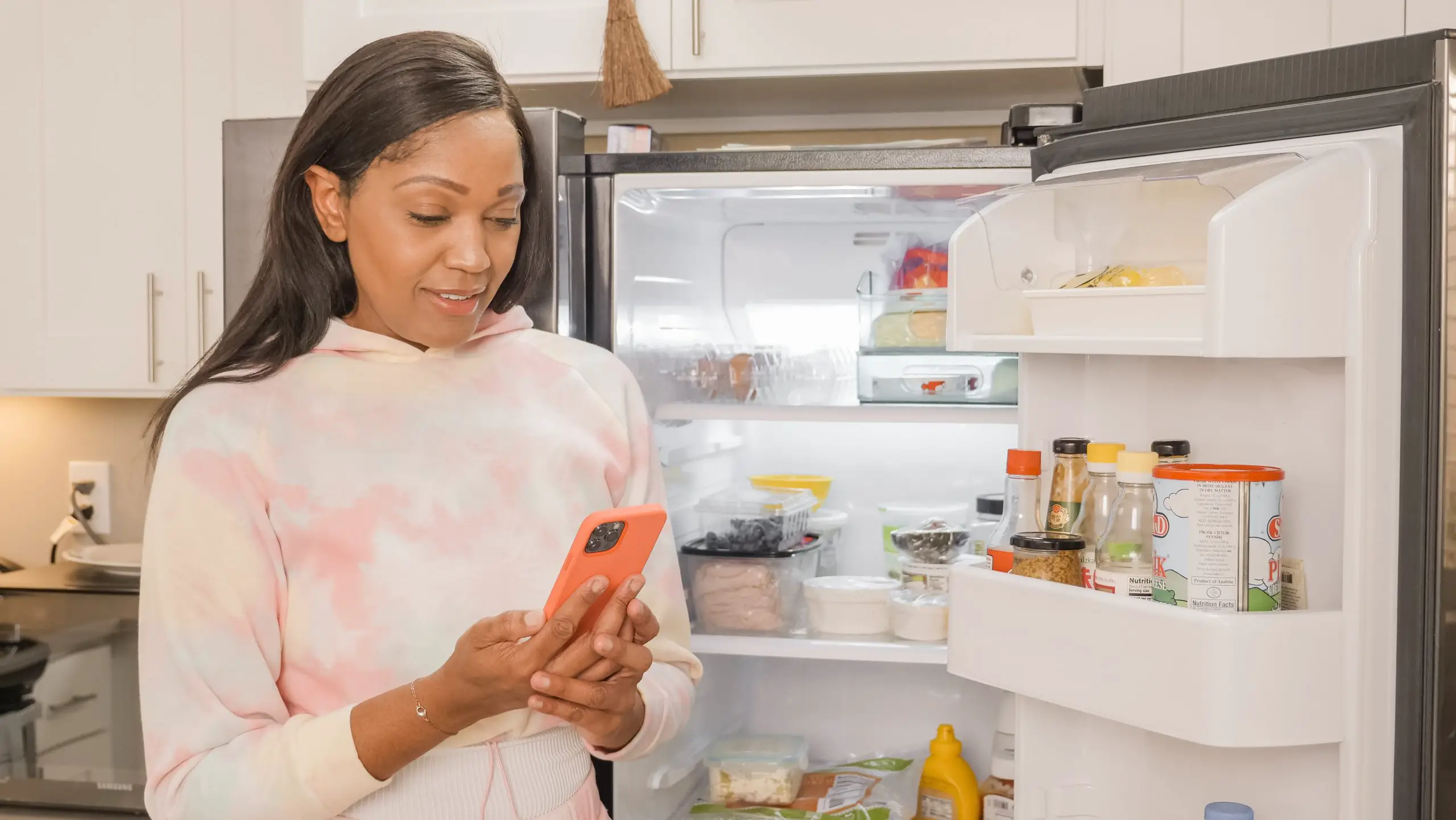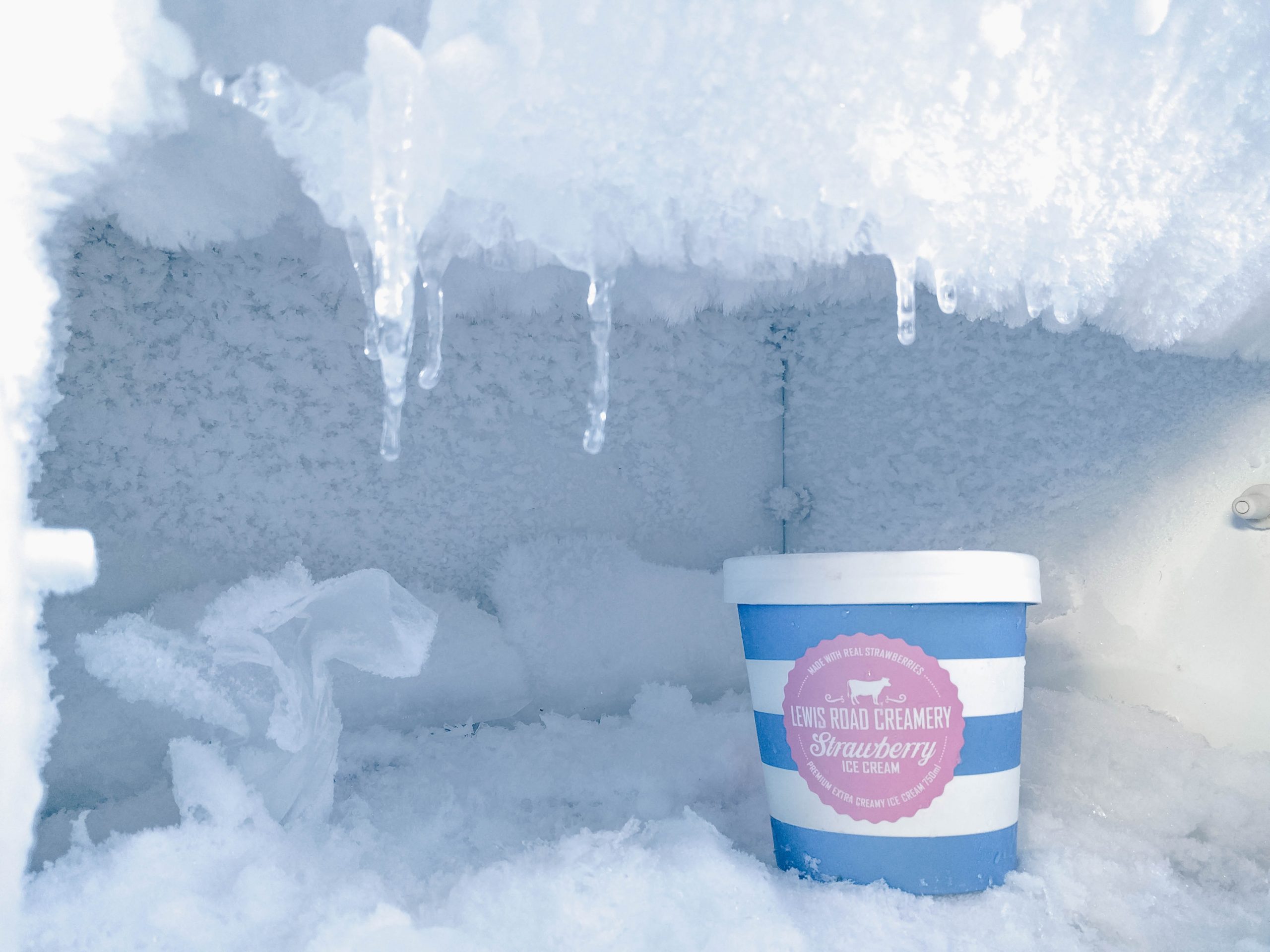If you have a freezer in your home but cannot make it cooler, there are a few things you can do to help. First, you will want to ensure the evaporator’s fan is functioning correctly. You should also check the temperature of the dial on the freezer and see if the condenser coils are clean. Once these two steps are complete, you should be able to make your freezer colder.

How to Make a Freezer Colder?
It might be as easy as altering the freezer’s temperature setting, or it can be a little more difficult, like checking the ventilation and circulation. Going through a list of troubleshooting procedures to see what works for your freezer is the best method to get it to the temperature you want.
On the back of the device are vacuum coils. The coils at the back of a freezer gather dust and debris over time. This accumulation can be avoided by occasionally removing the freezer and vacuuming it. Wipe up any dust with the vacuum’s brush attachment if your freezer isn’t getting cold enough.
- Remove any accumulated frost. Poor air circulation can cause frost to accumulate on the freezer coils or even on the freezer’s walls. It’s crucial to ensure you’re following the guidelines from the freezer’s manufacturer. Simply defrosting the appliance can remove the frost.
- Verify the airflow surrounding the device. Remember that a freezer requires airflow both inside and outside the container. Your freezer’s operation may be affected by whether there is enough room around the appliance. There must be room on all sides for the freezer to have enough ventilation.
- People frequently try to save money by purchasing a large quantity of food at once. Your freezer may become overstuffed as a result. When this happens, the freezer cannot circulate enough air to maintain a consistent temperature throughout. To keep your freezer cool, ensure it is not piled to capacity. Make sure nothing is blocking the flow of air.
- Examine the door’s seals along the edges. The temperature of your freezer can drop significantly if the door is not properly sealed. If this occurs, you might need to get the seals replaced by a professional or replace the seals yourself.
- Lower the setting on the dial. You might try lowering the freezer’s temperature after ensuring the issue is not a symptom of something greater. To guarantee optimal operation, it is advised that you consult the owner’s handbook before beginning.
Check if the Evaporator Fan is Working
If your freezer is too warm and your ice is not melted, you may have a problem with your evaporator fan. There are a few things you can do to make your freezer colder. You can clean out the coils and check for proper electrical connections. However, if your freezer is still not working, you may need to replace the evaporator fan or motor.
You need to enter diagnostic mode to check if the evaporator fan is working. This will allow you to turn the evaporator fan on and off and test its operation. The diagnostic mode should run for at least a few seconds.
Once you’ve entered the diagnostic mode, you should be able to hear the evaporator fan running. It will also run for at least two seconds. When you’re done, you should hear two beeps.
If you don’t hear those beeps, you can try to press the light switch several times until you get a long beep. If that doesn’t work, you might have a problem with the control board on your evaporator fan.
Monitor the Temperature on the Dial
There are several ways to monitor the temperature inside your freezer. A few of them are simple, and a few of them are more complex. The most obvious one is using a thermometer. Other options include setting a specific temperature and turning on the fan. For the latter, a bit of time and patience is required.
A thermometer is a great way to gauge the temperature inside your freezer. The best options are ones that feature a user-friendly display. These units usually feature a thermometer that can be adjusted to a certain degree of accuracy. They also have two compartments that can be independently controlled. This allows you to monitor the temperature and humidity levels in one spot. If you have a mini-fridge, the effect is multiplied several times over.
Setting a thermometer to a particular temperature will ensure that your food stays fresh longer. This is especially true of fruits and vegetables. It is also worth noting that the freezing temperatures will make your carbonated beverages expand to the point that they will spout out of the bottle.
Defrost the Freezer
A freezer is an essential household appliance that needs to be kept clean. You should defrost it at least once a year or every three months. It can help boost energy efficiency, keep food fresh, and free up storage space. You can use several methods to get your freezer back in working order.
Most people defrost their freezer by scraping ice off the inside of the unit. This can be done with a plastic spatula, wooden spoon, or a traditional ice scraper. Scraping ice will allow the ice to melt, which reclaims storage space. However, it is important to be careful when doing this. You could damage the inside if you accidentally puncture the gas line or the freezer walls.
Another defrosting method is using hot water to accelerate the melting process. Add a few bowls of hot water to your freezer to speed up the process. Replace them every five minutes.
What Number Should my Freezer Dial be set at?
Depending on the type of freezer, the temperature that should be adjusted on the dial can vary. However, most experts advise 0°F (-18°C). The best method for determining the right dial number to reach this temperature is to use a freezer thermometer.
It is crucial to remember that the purpose of freezing food is to guarantee that it is preserved so that it will be safe to eat later. The food will be preserved more effectively as the temperature drops.
A little trial and error with the dial and the freezer thermometer are required to obtain the ideal dial setting. The freezer setting requires 24 hours to reach the proper temperature. Therefore it can take a few days to realize this.
The thermometer should first be placed inside the freezer, and the temperature should be set to the highest (coldest) setting. You must then wait the following 24 hours for the temperature to normalize. Once the desired temperature is reached, the operation will be repeated.
Some claim that you may use a marker to make a mark inside your freezer. Make a note of what number on the dial the temperature translates to after you have confirmed it is 0°F. Thanks to this, you won’t have to go through the procedure again.
To ensure that the freezer is operating properly, many individuals always keep the freezer thermometer inside the appliance. If you observe any changes in the temperature, you might want to perform some of the methods described above to ensure there is no issue.
In general, the setting made by the manufacturer may affect the number on your freezer dial. Your appliance will, however, always be set to the appropriate temperatures if you adjust the dial by a freezer thermometer and suggested temperatures.
How do I Know if my Freezer is Cold Enough?
It depends on several tables, such as the freezer’s internal temperature and whether the food remains, to determine whether it is cold enough. One way to ensure the freezer stays cold is to keep it in the coldest setting possible.
The Food and Drug Administration advises keeping a refrigerator’s temperature at or below 40°F and the freezer at 0°F. This is due to the possibility of food poisoning from deteriorating food outside of these temperatures.
Most individuals frequently don’t consider whether their freezer is set to the proper temperature and accept the settings as they are. This holds until an issue arises, such as when their ice cream unexpectedly melts, or their meat is no longer frozen.
Monitoring the freezer’s temperature is an excellent approach to stop issues before they get out of hand. This is why it’s crucial to inspect and maintain your equipment regularly.
To achieve this, ensure the freezer thermometer maintains the right temperature by keeping an eye on it. You can save time and money by performing some of these inspections yourself. Additionally, you might want to think about having your freezer serviced just like you would your automobile.
In the end, if you pay attention to how your freezer feels when it is working properly, you will be able to determine if it is cold enough.
Does Outside Temperature Affect the Freezer?
Typically, a freezer is kept at temperatures between 60°F and 95°F. The freezer becomes ineffective when the levels go beyond or below these thresholds.
There are several things to think about whether you store your freezer inside your house, in your garage, or outside on a porch. Extreme temperatures have the potential to harm the freezer’s components permanently.
The compressor typically starts to slow down when the temperature around the freezer’s area falls below the 60°F threshold. The compressor will eventually stop working if the temperature drops any lower, which will cause food to spoil.
Maintaining a comfortable indoor temperature helps keep your freezer in good working order and prevents maintenance problems with the appliance. You can also save time and money by substituting other foods.
To guarantee optimum operation, experts advise against placing freezers in an unheated space, such as a garage. You should be aware of your area’s typical temperatures before deciding.
There are numerous strategies to make sure that your freezer stays colder overall. Some of these techniques require minimal effort and can prolong your appliance’s life. Remember that routine maintenance and inspections are the best approaches to ensure your freezer stays as cold as needed.
Conclusion
Food kept in a refrigerator that isn’t cold enough can spoil more quickly. But this article’s advice should make it easier to keep your fridge colder.
After adjusting the temperature dial, if the refrigerator still won’t cool down, look for typical issues such as gaps in the door seal, blocked vents, or dust on the condenser coils.
If your fridge is still not cold enough after addressing those easy issues, it’s necessary to hire a technician to make a diagnosis.

